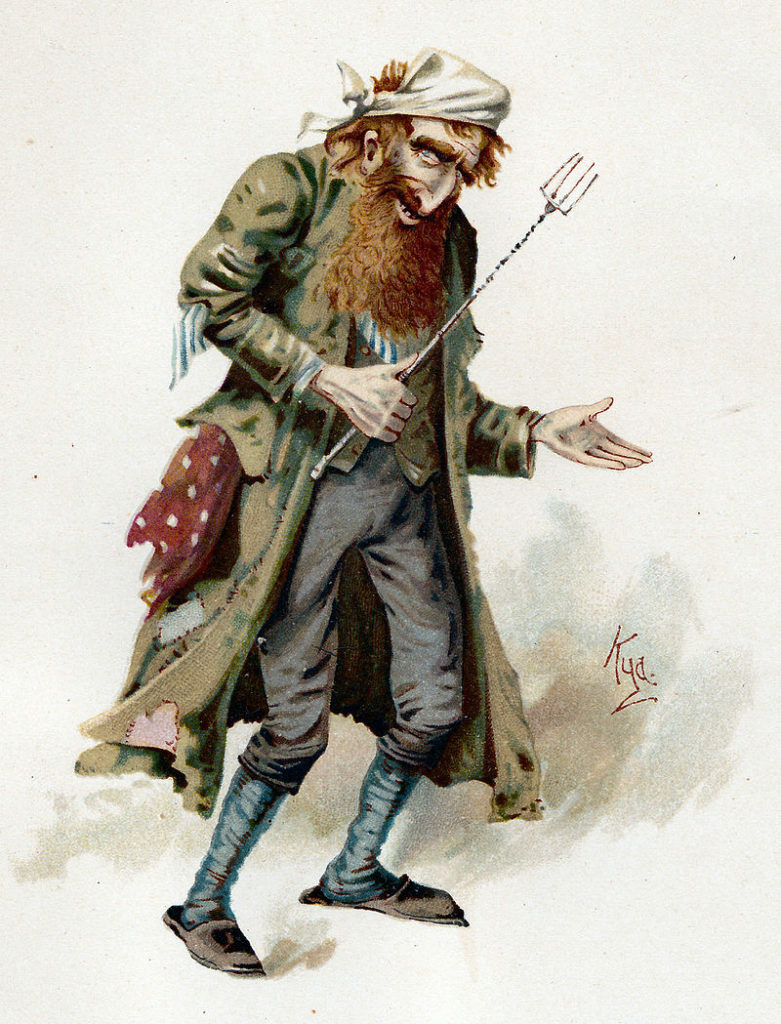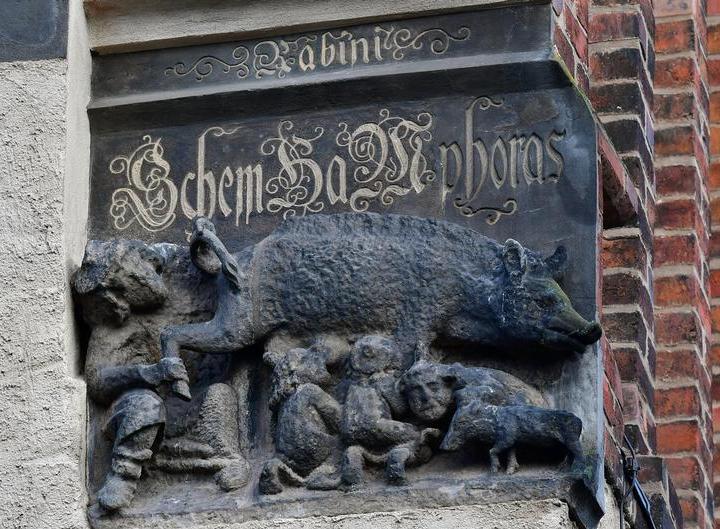Classic Antisemitism: Introduction and Physical Stereotypes
To see the whole Gallery of Antisemitism, visit https://www.saasuk.org/gallery-of-antisemitism/
To contact us, visit https://www.saasuk.org/contact-us/
Classic Antisemitism – Introduction
This page will describe some of the classic and traditional stereotypes of Jews, including stereotypes around money, culture and religion. This sort of stereotyping may seem harmless in itself and can appear in a jocular fashion, but all too often it is expanded into grand conspiracy theories such as the Jews controlling world banking. While it formed part of the antisemitism of the Nazi era, it originated before Hitler’s rise and still persists today. If an antisemite can get people to believe in these stereotypes, then it may help such a person in their quest to undermine Jews’ ability to live in peace, harmony and safety.
The Nazis softened up the German people with propaganda using such stereotypes and then were able to amplify this into a much more threatening and ultimately murderous form of antisemitism. It is very important that attempts to stereotype Jews in a malign fashion are resisted, even if some of them appear relatively harmless at first sight.
Racial stereotyping by members of other ethnic groups is one of the cruder forms of racism, and thus tends to be less common on social media than those which insinuate and imply less directly; but it remains a considerable problem.
Examples
Example 6: Physical stereotypes
Physical stereotypes of Jews date back to the 13th century. Jews are often depicted with large hooked noses, dark beady eyes, and drooping eyelids. Skin might be depicted as swarthy and hair as curly – prior to the 20th century, red hair was also linked with Jews. Jews were often also simultaneously depicted as ugly, dirty or deformed. The stereotype was linked with devilishness (Jews were sometimes given horns), and with other antisemitic stereotypes we explore below, such as greed, dishonesty, or manipulation. In England, all these stereotypes persisted even during the long centuries when there were few Jews in the country. They were reflected in literature – e.g. the characters of Shylock, Fagin and Svengali – and in the illustrations of these characters – until quite recently. Such stereotypes were a staple of Nazi propaganda, and less frequently, Soviet propaganda.
Below is an illustration of Dicken’s character, Fagin. https://en.wikipedia.org/wiki/Stereotypes_of_Jews#/media/File:Fagin_by_Kyd_1889.jpg

There has been recent discussion (December 2020) of the antisemitism of author Roald Dahl, which included the following: ‘In a letter to Dirk Bogarde, Dahl called a producer, “the wrong sort of Jew. His face is matted with dirty, black hair. He is disgustingly overweight and flaccid though only forty-something, garrulous, egocentric, arrogant, complacent, ruthless, dishonourable, lascivious, slippery.”’https://unherd.com/2020/12/roald-dahls-revolting-anti-semitism/ The crudest stereotypes of Jewish physical features and mannerisms are less often seen in modern Western social media, but do still exist. In a recent example, the image of a US Democratic (and Jewish) candidate Jon Ossoff was digitally altered by his opponent, David Perdue, to enlarge his nose in a Facebook ad, presumably in order to amplify the message that Ossoff was ‘trying to buy Georgia’ with his large campaign spend’. Photo of Ossoff, as he is, is on the right.
https://atlantajewishtimes.timesofisrael.com/perdue-campaign-removes-ad-ossoff-called-anti-semitic/
Similarly, here the facial features – nose, eye-pouches and eyebrows – of philanthropist George Soros are exaggerated in cartoons portraying him as conspiratorially backing Antifa in the U.S, and funding left-wing terrorism. Of course cartoonists regularly exaggerate features, but when they conform to stereotypes of Jews one has to suspect antisemitic intent.


The stereotype that Jews are dirty is also reflected when they have been compared in derogatory terms to barnyard or wild animals, such as pigs, goats and cows. In mediaeval times churches housed ‘Judensau’, depictions of Jews having obscene relations with pigs. Depicting Jews as animals or insects continues in contemporary texts and cartoons.
https://www.dw.com/en/germany-court-rules-anti-semitic-art-can-remain-on-church-facade/a-52254490

Criticism of the practice of circumcision is also sometimes motivated by antisemitic attitudes: of course it is also performed by many Muslims, and in some countries is commonly performed as a health measure. Here, it is portrayed as mutilation, and in the context of criticism of Israel and of the British Board of Deputies’ ‘Ten Commitments’ (requested of Labour candidates in the 2019 General Election), it can be seen as antisemitic.






Be First to Comment